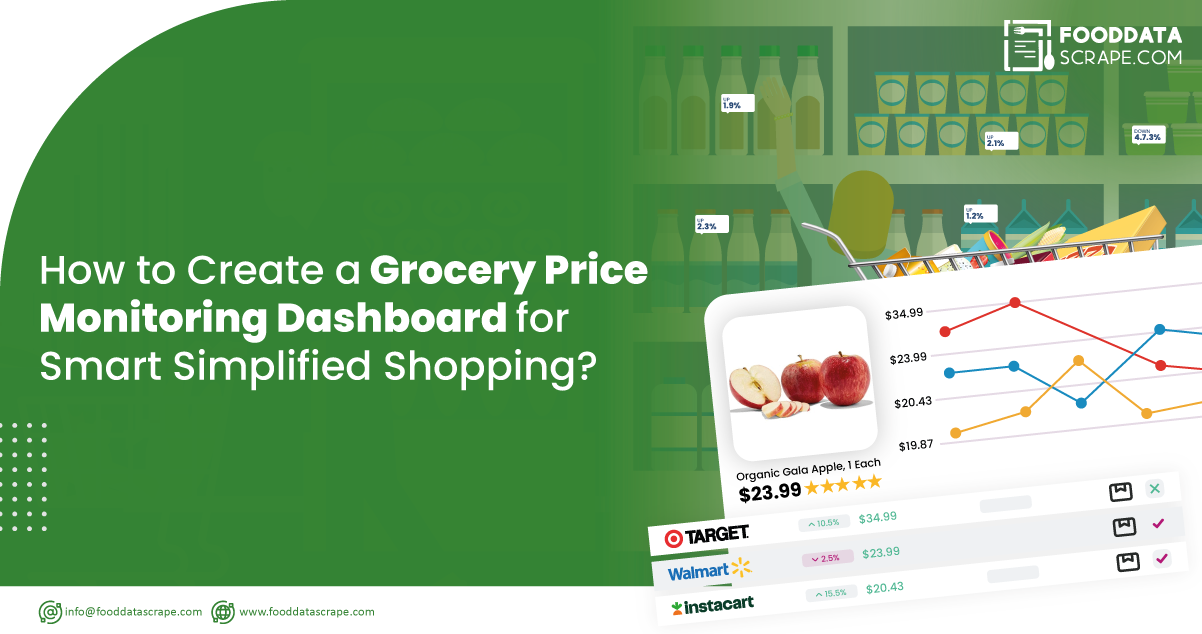A Grocery Price Monitoring Dashboard is a powerful tool designed to track, analyze, and visualize the price dynamics of various grocery items in real time. It is an invaluable resource for consumers, retailers, and suppliers, providing insights into pricing trends, seasonal variations, and market fluctuations.
This grocery price monitoring dashboard typically collates data from multiple sources, such as supermarkets, online retailers, and local stores, to offer a comprehensive view of grocery prices across a wide range of products. Users can monitor price changes, identify cost-saving opportunities, and make informed purchasing decisions.
Key features often include price history graphs, comparison charts, and alerts for price drops or increases. The dashboard may also incorporate AI-driven algorithms to predict future price trends and help users optimize their grocery budgets.
In a world where grocery costs impact household budgets significantly, a Grocery Price Monitoring Dashboard empowers consumers to shop smarter and retailers to make data-driven pricing strategies, ultimately creating a more transparent and efficient grocery market.
Impact of Grocery Price Monitoring
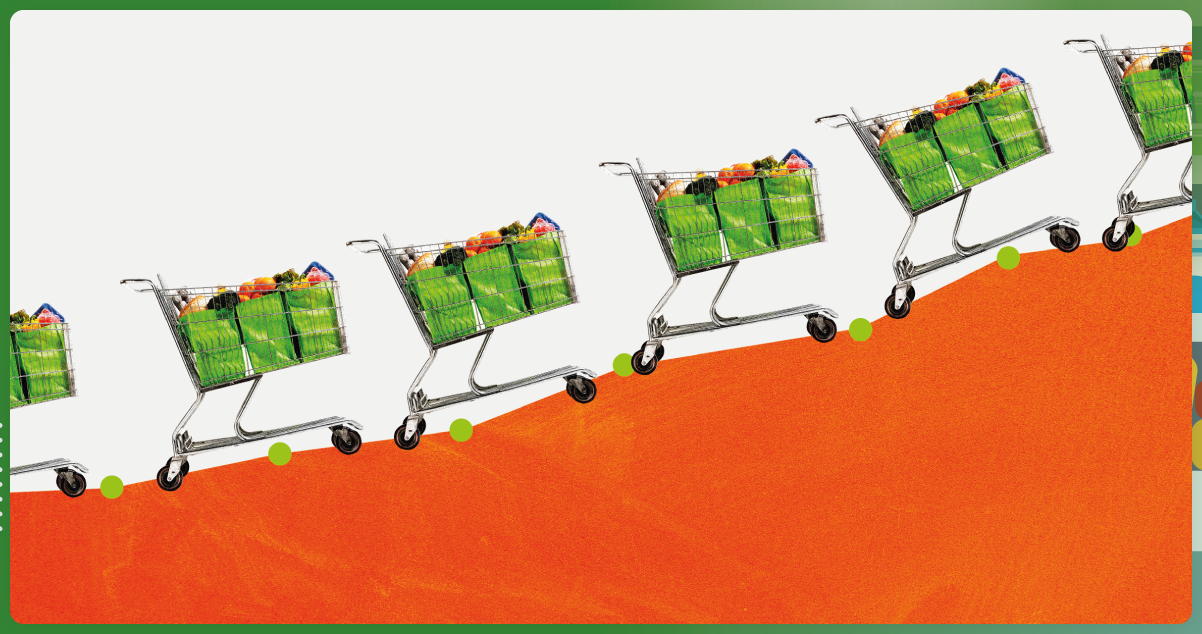
Grocery price monitoring has a significant impact on various stakeholders and the broader economy. Here are some key impacts:
- Consumer Empowerment: Price monitoring empowers consumers by providing access to real-time price data. Shoppers can make informed decisions, compare prices across different retailers, and take advantage of discounts and promotions. It leads to more cost-effective grocery shopping and savings for households.
- Price Competition: Retailers and supermarkets remain competitive when they know that consumers have access to pricing information. This competition can lead to more affordable prices and better deals for consumers.
- Inflation Control: By scraping grocery prices, governments and central banks can better track inflation rates. Rising grocery prices can be an early indicator of inflation, allowing authorities to take appropriate monetary and fiscal measures.
- Supplier and Retailer Strategies: Manufacturers and retailers can use price monitoring data to make informed decisions about their pricing strategies. They can adjust prices in response to market trends, consumer demand, and competitors' pricing.
- Market Transparency: Price monitoring fosters market transparency. This transparency reduces information asymmetry, benefiting both consumers and businesses. It discourages price manipulation and unethical practices.
- Inventory Management: Retailers can use grocery data scraper to manage their inventory more efficiently. By analyzing price trends, they can make data-driven decisions about restocking and managing product supply.
- Economic Efficiency: Price monitoring contributes to economic efficiency. It encourages rational consumption and resource allocation, reducing wastage and overspending.
- Research and Analysis: Researchers and analysts can use grocery data scraping services for market research, economic studies, and policy analysis. It contributes to a better understanding of consumer behavior and market dynamics.
- Economic Indicators: Grocery price data is known as an economic indicator. It provides insights into the overall health of the economy, including inflation rates, consumer confidence, and purchasing power.
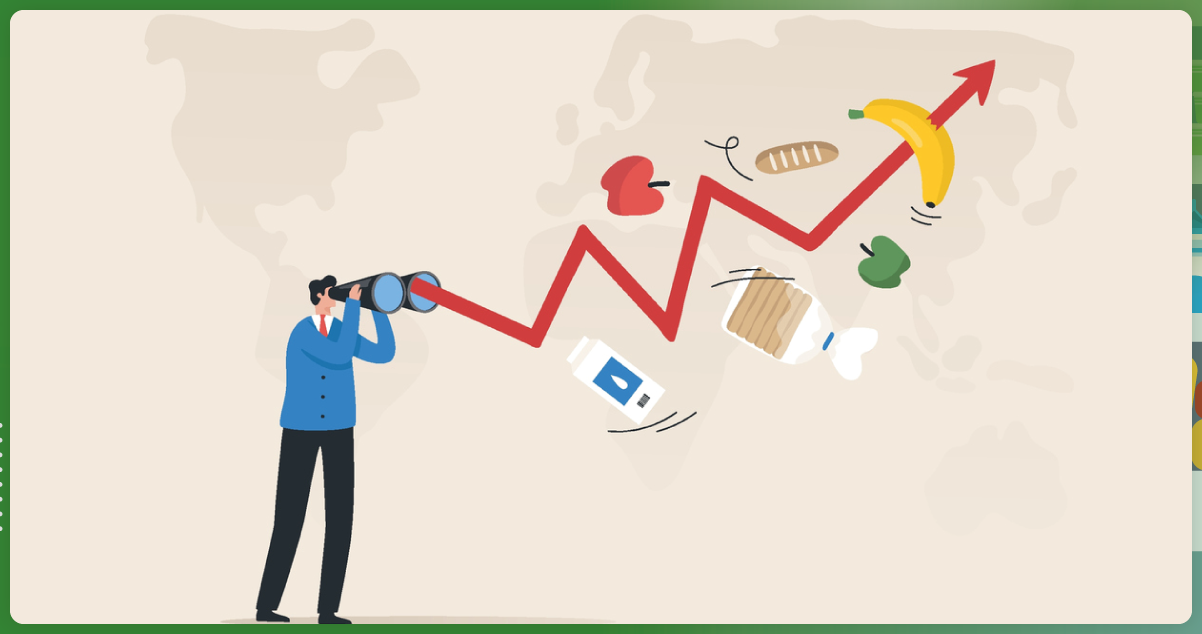
Overall, grocery price monitoring is vital in promoting consumer welfare, market efficiency, and economic stability. It equips consumers with the tools to make informed choices, encourages fair competition among businesses, and provides valuable data for economic decision-making at both the individual and governmental levels.
How Can Grocery Data Scraping Help in Comparing Prices?
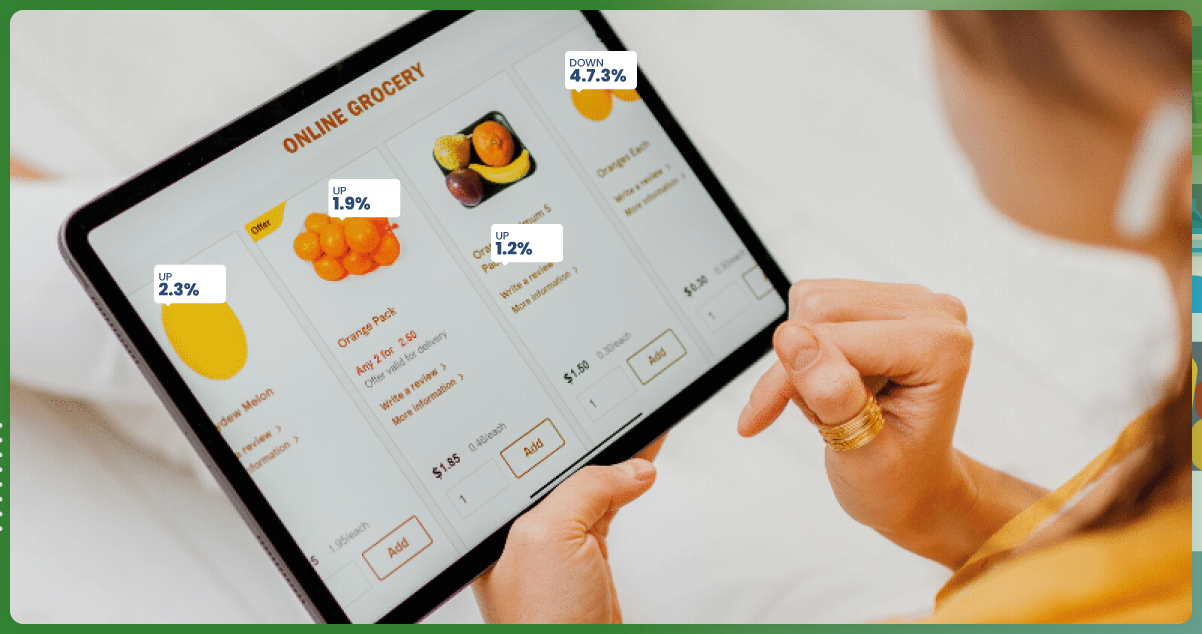
Grocery data scraping is a valuable tool for comparing prices, helping consumers make informed purchasing decisions, and saving money. Here are eight key points in detail on how grocery data scraping facilitates price comparison:
Real-Time Price Updates: Scrape grocery price data to access real-time pricing information from various retailers, both in-store and online. Consumers can check current product prices without visiting multiple stores or websites.
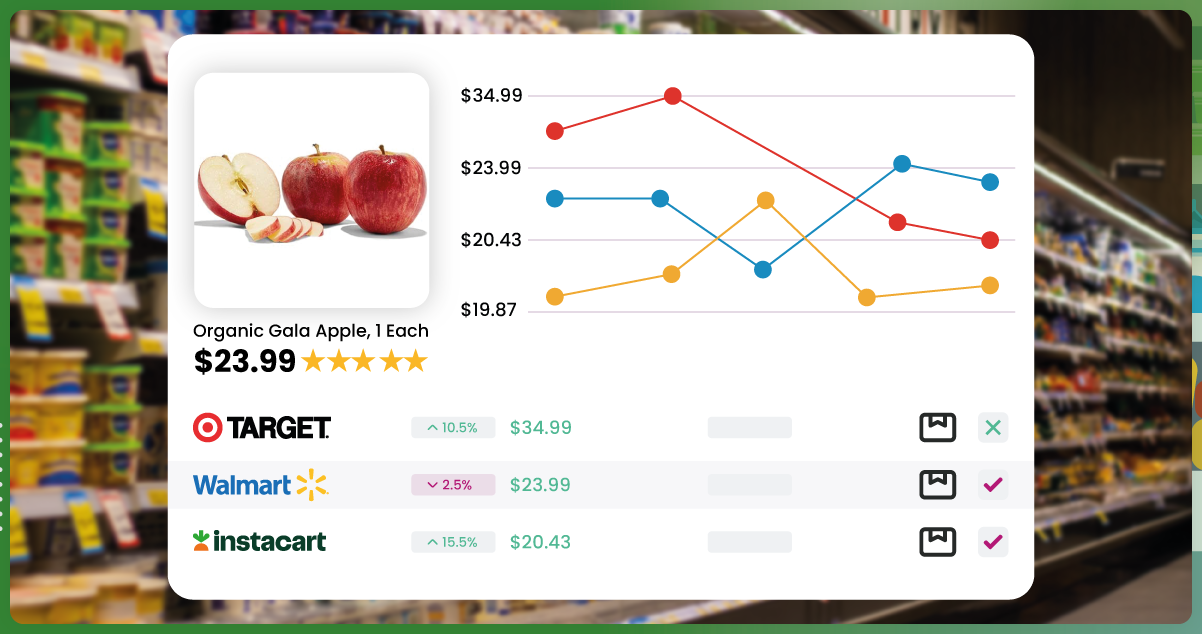
Multi-Retailer Price Comparison: With scraping, consumers can compare prices for the same product across different supermarkets, online grocery stores, and even local stores. They can quickly identify which retailer offers the most competitive price for a particular item.
Special Offers and Discounts: Grocery scraping tools can detect and highlight special offers, discounts, and promotions. Consumers can quickly spot deals such as buy-one-get-one-free offers, discounts on bulk purchases, or seasonal promotions. It ensures they maximize their savings.
Historical Price Trends: Grocery data scraping allows consumers to track price trends. They can access historical price data and analyze how prices have changed, helping them decide the best times to make specific purchases.
Customized Shopping Lists: Shoppers can create personalized shopping lists containing the needed items. Using a scraping tool, they can get price comparisons for all the products on their list, making it easier to budget and shop efficiently.
Budget Management: Access to price data enables consumers to manage their grocery budgets better. They can set spending limits, track expenses, and make choices that align with their financial goals. This feature is handy for budget-conscious shoppers.
Product Alternatives: Grocery scraping tools can suggest alternative products similar to what consumers are searching for but at a lower cost. If a particular brand or item is too expensive, shoppers can discover more budget-friendly options.
Time Savings: Price comparison can be a time-consuming task, especially when visiting multiple stores. Grocery data scraping streamlines the process, enabling consumers to compare prices online quickly. It saves time and effort, allowing shoppers to make efficient decisions.
How to Use Scraped Data to Create Price Monitoring Dashboard for Groceries?
Creating a price monitoring dashboard for groceries using scraped data involves several steps and considerations. Here are seven key points to guide you:
Data Collection: Start by scraping pricing data from various sources, such as grocery store websites and APIs. Ensure you collect relevant information, including product names, prices, store details, timestamps, and any additional data valid for price comparison.
Data Storage and Management: Store the scraped data in a structured database or repository. Then, choose a database system that suits your needs and ensures data integrity, such as SQL or NoSQL databases. It will help organize the data in a way that makes it easy to retrieve and update.
Data Processing: Process the scraped data to ensure consistency and accuracy. It may involve data cleaning, normalization, and dealing with missing or erroneous values. The quality of your data significantly impacts the accuracy of your dashboard.
Dashboard Design and Tools: Select a dashboard design and visualization tool that aligns with your project goals. Tools like Tableau, Power BI, or open-source options such as Grafana or Superset offer a wide range of visualization capabilities.
Data Integration: Connect your chosen dashboard tool to the data source where your scraped data is stored. Create connections and queries to retrieve the relevant data for visualization.
Visualization and Alerts: It help design visualizations to communicate pricing trends and variations effectively. Use charts, graphs, and tables to display price changes over time, compare prices between stores, highlight special offers, and implement alert mechanisms to notify users of certain conditions, such as price drops or discounts.
User Interface and Accessibility: Develop a user-friendly interface that allows users to search for products easily, compare prices, set preferences, and receive alerts. Ensure that your dashboard is responsive and accessible on various devices, and consider user training or documentation to help users make the most of the tool.
To collect data from the dashboard, you can follow these steps:
- Begin by accessing the dashboard section and then precisely navigate to the "Grocery Dashboard."
- You will get a new dashboard view upon clicking the "Grocery Dashboard" option.
- You can select specific criteria for your desired data within this dashboard view. It includes choosing the desired category of grocery products you want to examine and the particular states or regions you wish to focus on.
- Once you've selected it, the dashboard will display your view. In this view, you will compare the average prices of the chosen grocery category across the selected states or regions. Each state will be accompanied by its name, allowing you to quickly assess and compare the pricing trends for the specified grocery items in your chosen locations. This information can be invaluable for making informed decisions about grocery prices, market trends, and regional disparities.
To access comprehensive insights, don't hesitate to contact Food Data Scrape. We offer a comprehensive suite of services, including Food Data Aggregator and Mobile Grocery App Scraping service. Our advanced insights and analytics can elevate your decision-making processes and take your business strategies to new heights. Contact us today to unlock success powered by data!
Get in touch
Get in touchWe will Catch You as early as we recevie the massage
Trusted by the best of the food industry























































































